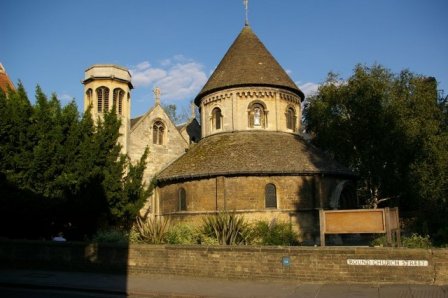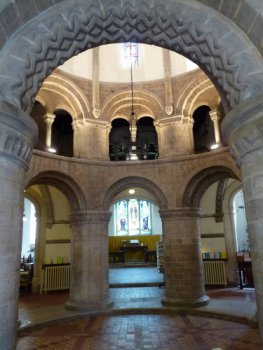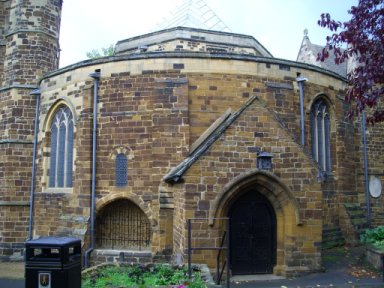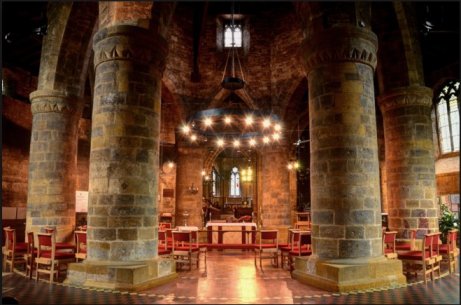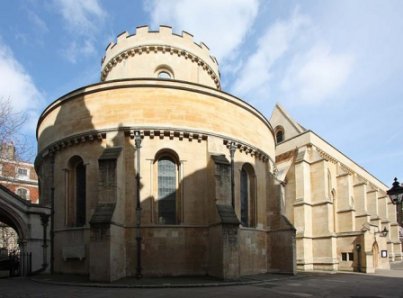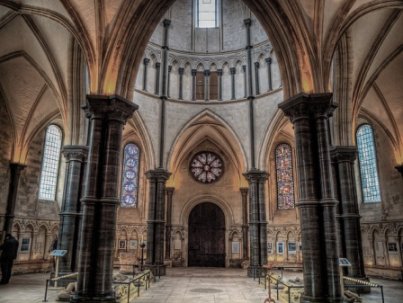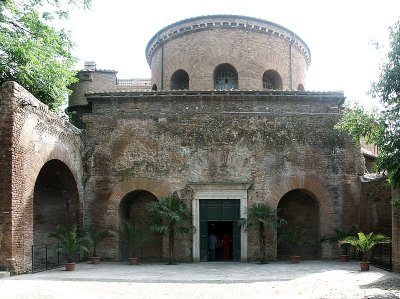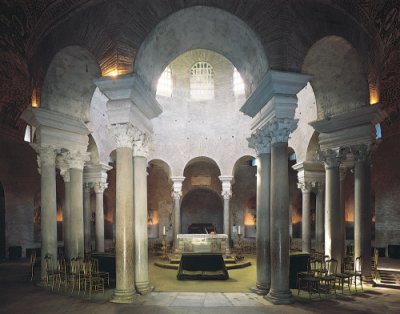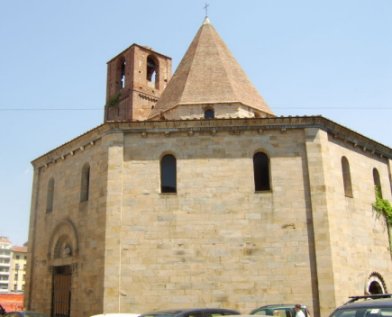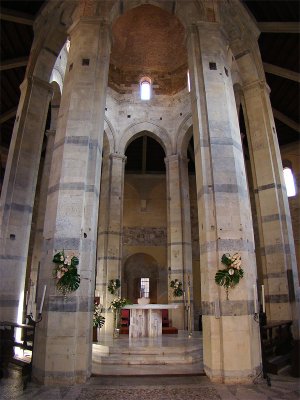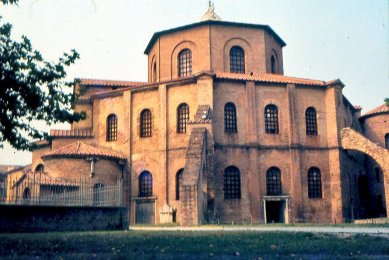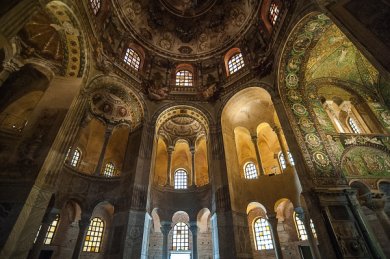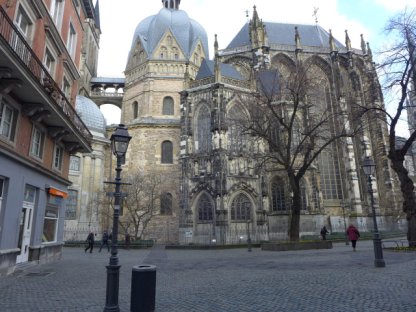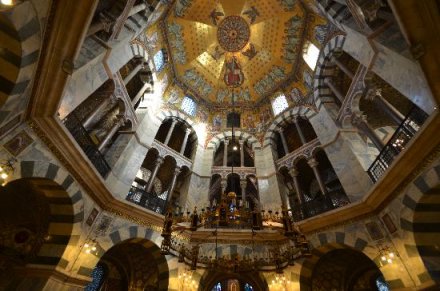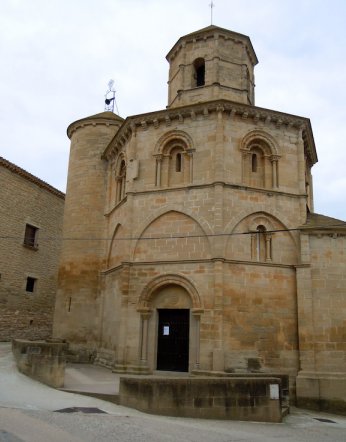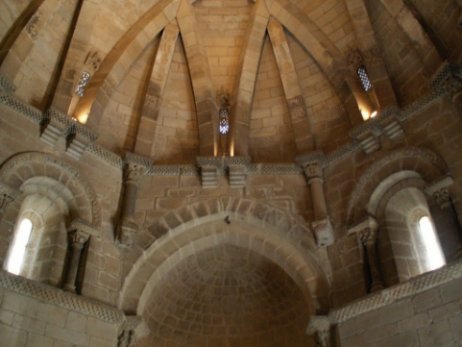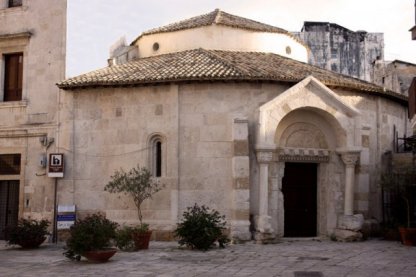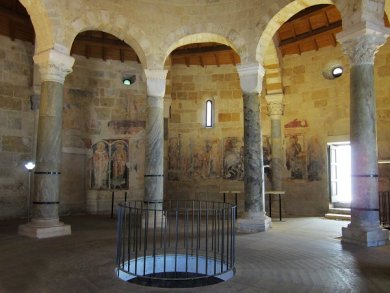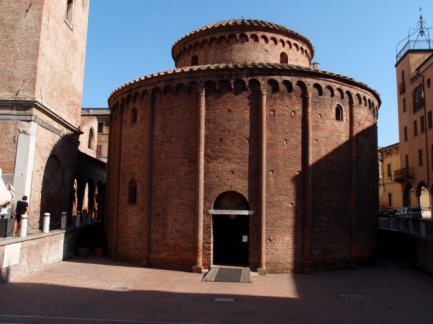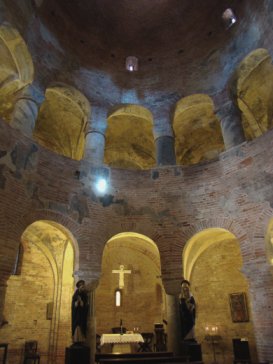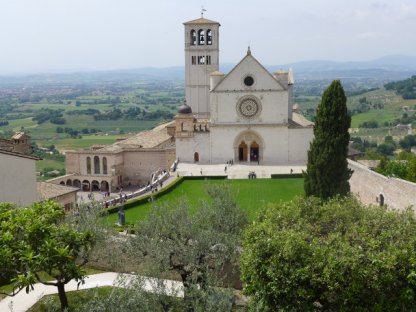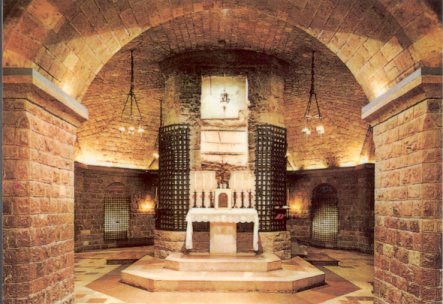|
A few more |
|
| The main feature of these buildings
inspired by the Holy Sepulchre in Jerusalem is the Rotunda.
Constantine's original building was based on Roman models such as the
Pantheon in Rome. The function of that building was to celebrate Roman
gods, but following the Holy Sepulchre the function of such buildings
was often that of a martyium: the church of Santa Constanza in Rome,
dating from around 360, was a martyrium probably for the wife of Emperor
Julian for his wife Helena, daughter of Constantine. At this point it is wise to introduce a note of caution. In considering round church, Colin Morris (The Sepulchre of Christ and the Medieval West) points out that 'it is far from the truth that all such churches were designed as a representation of the rotunda at the anastasis. . . it is not safe to treat a centrally planned church as a commemoration of the Sepulchre unless (and this is rare) there are other reasons for accepting the attribution.' Some of the churches here have clear references to Jerusalem; the name 'Holy sepulchre' is pretty solid evidence. Others have a good historical pedigree. I would suggest that those designed as martyriums, containing the tomb and relics of a saint or monarch, have a similar function to the Holy sepulchre in Jerusalem. San Vitale in Ravenna, for example, was certainly inspired by the Holy Sepulchre, and in turn the Palatine chapel, burial place of Charlemagne, was influenced by Ravenna. |
|
The Church of the Holy Sepulchre, Cambridge |
|
|
|
|
The Church of the Holy Sepulchre, Northampton |
|
|
|
|
Temple Church London |
|
|
|
|
Santa Constanza Rome |
|
|
|
|
Santo Sepolcro Pisa |
|
|
|
|
San Vitale Ravenna |
|
|
|
|
| Palatine
Chapel Aachen |
|
|
|
|
Church of Santo Sepulcro, Torres del Rio, Spain |
|
|
|
|
San Giovanni del Sepolcro, Brindisi |
|
|
|
|
Rotunda of San Lorenzo, Mantua |
|
|
|
|
| A final
and perhaps unlikely choice; The Basilica of San Francesco, Assisi |
|
|
|
|
|
|
| After
Francis's death the search began for the ideal site for the burial of
the man considered to be the second Christ. Just
outside the western wall of Assisi was a small hill, used up to that
point for the execution of criminals and known as the Colle dell'Inferno.
The resonances provoked by this contemporary Golgotha was not lost on
the Franciscan movement, and work began here in 1228. The body of
Francis was moved to the site in 1230. |
|
